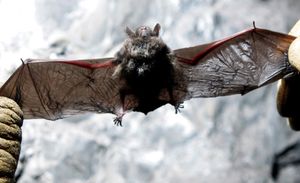Tonight: Biologist to explain value of bats
WILDLIFE -- Learn the global importance of bats and the differences of the 15 species found in Washington during a free presentation by Washingotn Fish and Wildlfie Department wildlife biologist Ella Rowan, Tuesday (Aug. 2), 7 p.m., at the Inland Northwest Wildlife Council auditorium, 6116 N. Market St.
Unusual adaptations such as echolocation, flight, torpor, hibernation and delayed pregnancy are a few strategies that have allowed bats to master their niches across the world and especially in the more temperate regions.
Each of the species found in the Inland Northwest has distinctions, including the their preference for habitat and diet as well as in their appearance and behaviors.
These creatures are important to humans in ways most of us don't know. Check out this program.

